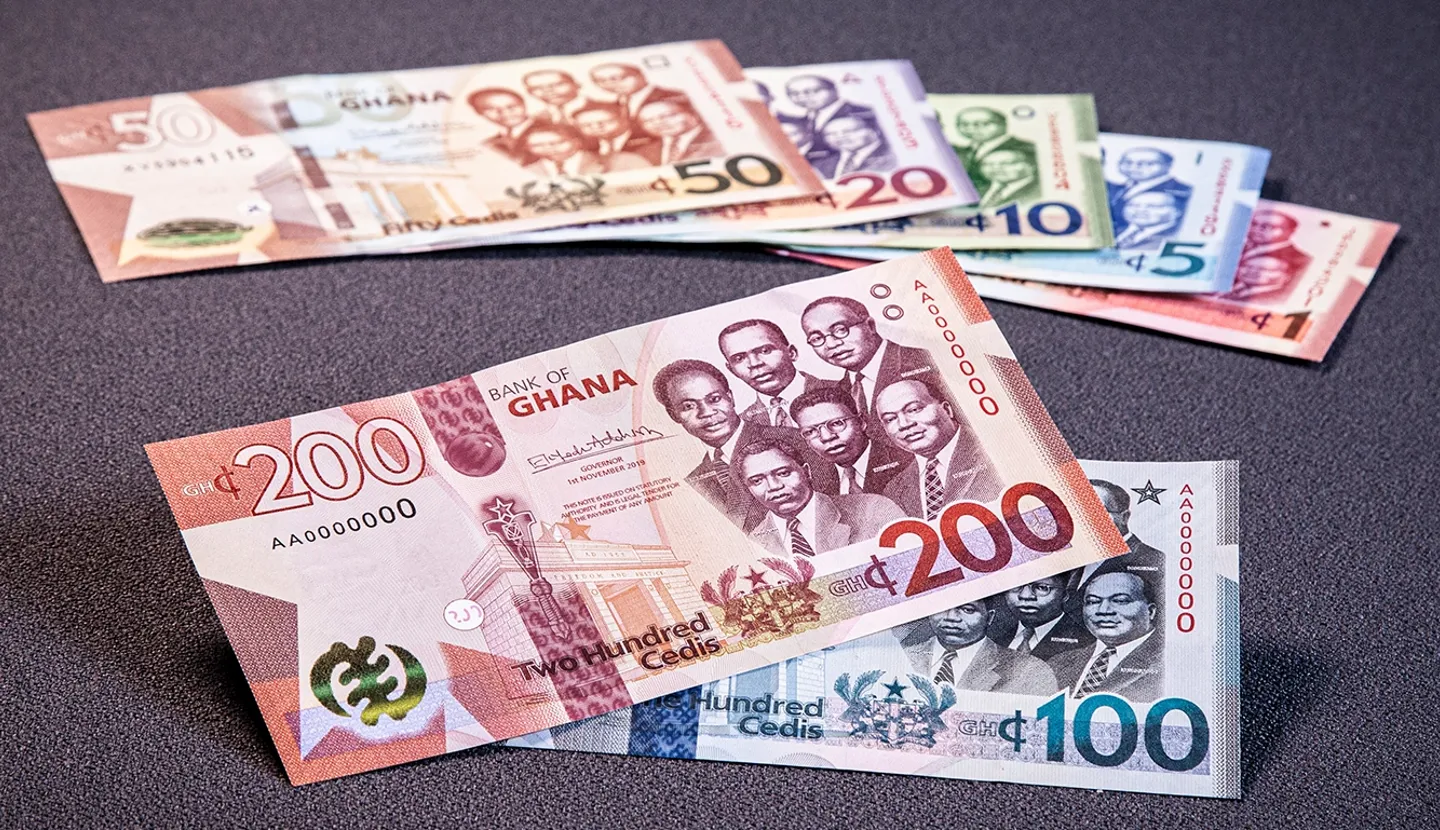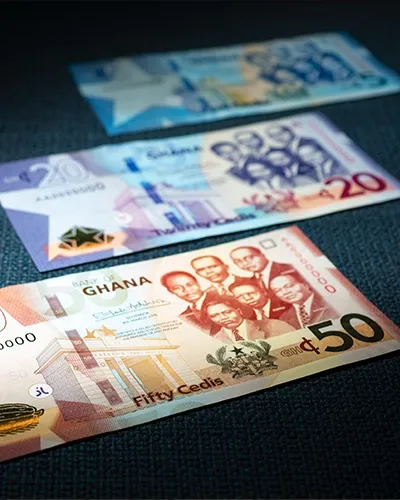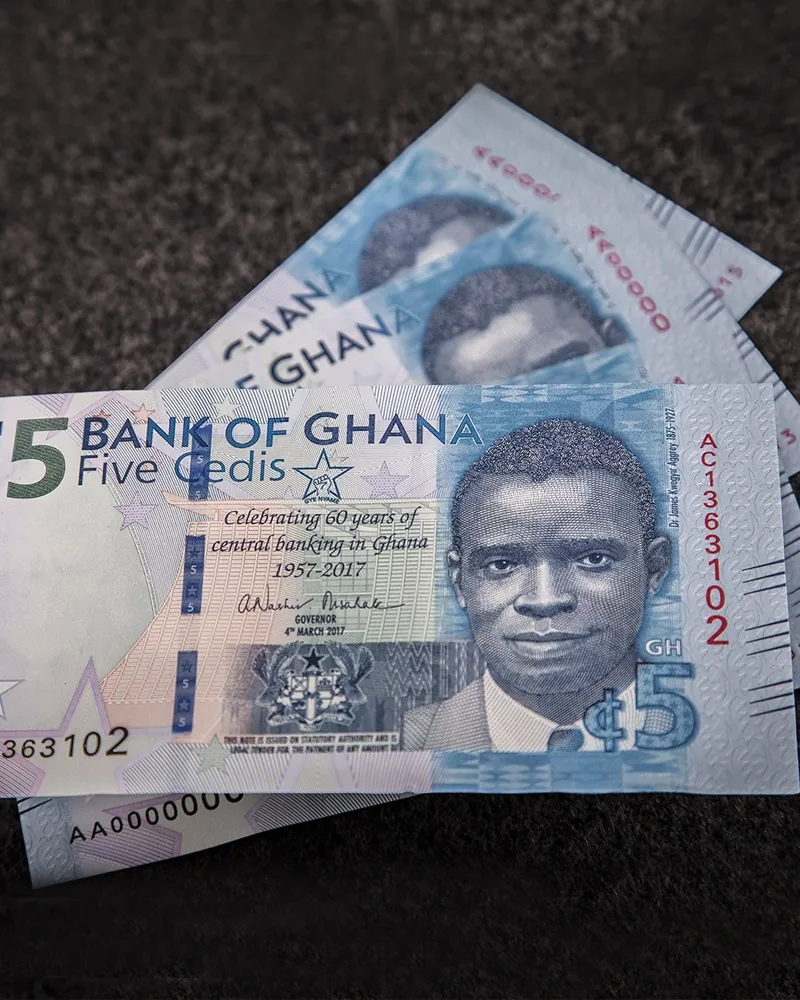Flexibility and Pragmatism
BANK OF GHANA

HOW TO CREATE DEEP SUPPLIER RELATIONSHIPS
Going from a monopoly situation to an open multi-supplier model requires well-structured processes. But that is not enough. When the Bank of Ghana opened up for more banknote suppliers in 2007, the evaluation also included relationship skills and the level of flexibility and pragmatism.
CATHERINE ASHILEY
Ms. Catherine Ashiley is very well known within the financial community in Ghana and among currency professionals around the world. She recently retired after 37.5 years at the Bank of Ghana with a position the past dozen years as the Currency Director and Adviser to the Governor on currency matters.
For reasons largely of tradition from colonial days, few opportunities for competition arose in the printed currency procurement process. That changed in 2007 when the Bank of Ghana decided to open up the bidding process and invite more printing suppliers to the table. One of the driving forces behind the decision was Catherine Ashiley. She is a strong advocate for using a selection of external suppliers – and advice against central banks managing their own internal print houses. The technology is moving fast, and in her view, internal resources have difficulties meeting up with the demands in the same way as external professionals.
“My recommendation is not to rely on one single supplier. You get better value for money if you have a tender in place and select the most suitable printer for each project. It is also very important to maintain a good level of relationship with all suppliers”.

NEED FOR PROACTIVE ADVICE
Since 2007, the Bank of Ghana has been pleased with their selected suppliers. And as a frequent traveler to banknote printers around the world, Catherine Ashiley has a broad view of what is needed to establish a robust working relationship.
“I believe that external suppliers should be more proactive. If what you asked for in a tender cannot be done, they should tell us and then come back with a workable solution. I am not particularly fond of yes-sayers.”
She also recommends everyone to visit and spend proper time with the printing suppliers. She has worked closely with the team in Tumba, Sweden,
and just before retiring, she actively participated in Crane Currency’s regional currency seminar in Accra with a dozen attending regional central banks.
STRUCTURED EVALUATION PROCESS
By using a common evaluation template for all projects and tenders, the Bank of Ghana introduced a structured process for treating all printing suppliers equally. The first pre-qualification of suppliers is followed by a thorough evaluation of technical performance, financial status and delivery capabilities. But that is not enough.
TWO NEW DENOMINATIONS
As the upgraded banknote series began to issue, the Bank of Ghana was planning its next step – the addition of two new high denominations. Issuing new higher denominations is rarely straightforward. Their high face value means they can act as stores of value, and in cash-intensive economies, high velocity transactional workhorses. In all cases security is paramount. In the case of Ghana, good planning smoothly capped the banknote series with new 100 and 200 Cedis banknotes. The new banknotes seamlessly fit into the series both dimensionally and thematically, while the security of the notes was increased with exciting and dynamic MOTION SURFACE® stripes customized with enduring national symbols set alive with movement and strong 3D effects.
CASH USAGE INCREASES WITH MOBILE PAYMENTS
Catherine Ashiley is now retired from the Bank of Ghana but her passion for currency and the industry is still strong. In her region, new technology such as mobile payment solutions are even increasing the public demand for banknotes. In her view, cash is still king.


“Banknotes will be very relevant for many years to come – especially in this part of the world. We should take care of our banknotes and develop the technology even further to leave the counterfeiters behind.”
– Ms. Catherine Ashiley
GHANA 5 CEDIS COMMEMORATIVE BANKNOTE
In 2017, the Bank of Ghana issued the 5 cedis commemorative banknote with the theme “Celebrating 60 years of Central Banking in Ghana (1957 – 2017).” The design of the GHS5 commemorative note draws inspiration from Dr James Kwegyir Aggrey, whose contribution to the national development sector went beyond the boundaries of the Gold Coast, the colonial name for Ghana.
Dr James Kwegyir Aggrey was a famous educationalist, missionary and teacher. Born in 1875 at Anomabu in Ghana and passing away in New Jersey, USA 52 years later, Dr Aggrey was the first son of Ghana to build a bridge between the African continent and North America.
The banknote features Crane Currency’s security feature RAPID®, 3 mm wide, customized with the “Black Star”, a symbol widely recognized in the region. When the note is tilted, the Black Star appears to pulsate while the white figure 5 remains stationary and legible.
